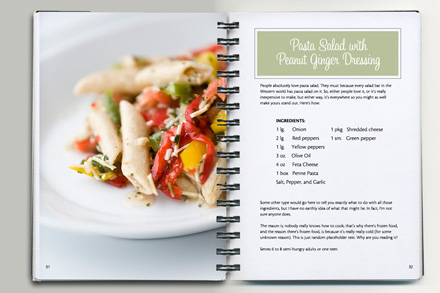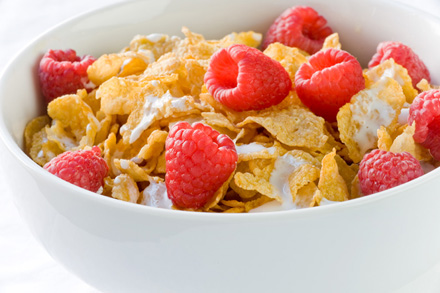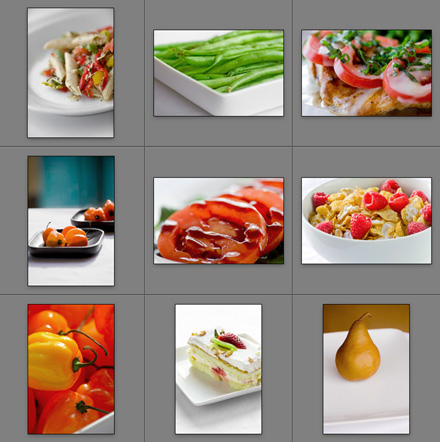I mentioned last week that I’ve been trying to get my wife to do a cookbook of her recipes, and along those lines I’ve been shooting a lot of food lately (when I tell people I’ve been shooting food, they usually look at me and say, “Food?” I tell them to think of the type of shots you’d see in a cookbook—as shown above where I mocked up some of my shots with a cookbook layout).
I’ve done a food shoot every single day this past week, and I’ve gained 14.3 lbs. (totally kidding, but I’ve got to tell you, since I’m closely watching my weight, it’s tough shooting food and not totally chowing down on it. The only saving grace is; once you’re done shooting it for an hour or two, you usually wouldn’t want to eat it).
I took the shots above (click on them for a larger version) using pretty much the same lighting set-up; natural window light, along with a Westcott Daylight Fluorescent Spiderlite with a 24″x32″ softbox as a fill light, and a small handheld white reflector to fill in the shadows on the opposite side of the light.
For example, the cereal shot above was taken in front of a open window, with the window light coming in and lighting the cereal from behind. Then, just off to the right of my camera, I positioned the Spiderlite aiming down at a 45° angle. Lastly, on the left side of the bowl, I held a small handheld reflector just outside the frame.
The cereal photo was taken with a Nikon D3, (mounted on a tripod) with a Nikon 70-200mm lens, with the screw-on Canon Closeup lens attached (which I mentioned in Vol. 1 of my digital photography book, which turns any 77mm sized lens into an instant Macro lens).
The Spiderlites are really ideal for shooting food (or any product shots for that matter), because they match the daylight light nicely; they don’t get “hot” (because they’re fluorescent), and because they’re always on (a continuous light source), which makes lighting something as tricky as food much easier. Here’s the link for more info on the Spiders.
TIP: The “milk” in the cereal you see above is actually Elmer’s Glue. Real milk makes the cereal really soggy, really fast, and it’s hard to control, where glue pretty much sticks where you want it (get it, sticks….ah forget it).
I’m doing a food shoot every day for 30 days (in between other shoots, like the two I have scheduled for tomorrow), and I’m learning a lot and having a blast. I’m going to hire a food stylist for some of the final shoots later in the month, so if you know of a kick-butt food stylist based in the Southeast, let me know.






The glue doesn’t look like milk. More like sugar frosting. Not a critique, just an observation.
Any suggestions on a good portable pocket light to use for non-studio food pics (foodie pics)?